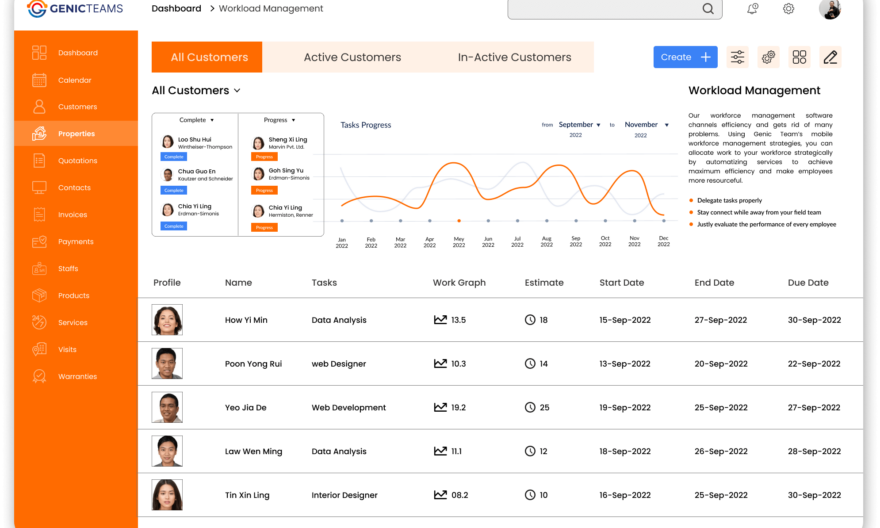
Managing a business comes with many challenges. Balancing schedules, tracking employee hours, and ensuring productivity can be overwhelming. Workforce management software (WFM) can help businesses tackle these tasks. It streamlines operations, saves time, and improves team performance.
But how does it work? And how can it benefit your business? Let’s explore this in detail.
What Is Workforce Management Software?
Workforce management software is a digital tool designed to simplify workforce-related tasks. These tasks include scheduling, time tracking, and monitoring employee performance. The software uses automation to improve accuracy and reduce manual work. Whether you run a small shop or a large company, it can make daily operations much smoother.
The Growing Need for Workforce Management Tools
Today’s workplaces are fast-paced and dynamic. Employees expect flexibility and transparency. At the same time, businesses need efficiency and compliance. Manual processes are no longer enough. They are slow, error-prone, and costly. Workforce management software bridges this gap. It creates a balance between employee needs and business goals.
Key Benefits of Workforce Management Software
Investing in workforce management software offers many advantages. Here’s how it can positively impact your business:
Simplifies Employee Scheduling
Scheduling can be complex, especially for businesses with shifts. WFM software automates this process. It ensures shifts are covered without conflicts. Employees can view their schedules instantly, reducing confusion.
Tracks Time and Attendance Accurately
Forget manual timesheets. Workforce management tools record employee hours digitally. This eliminates errors and ensures accurate payroll processing. It also tracks tardiness and absenteeism.
Boosts Productivity
Automation saves time on repetitive tasks. Managers can focus on strategic goals instead of admin work. Employees benefit from clear expectations and consistent schedules. This improves overall productivity.
Enhances Employee Satisfaction
Happy employees are more engaged and productive. WFM software provides transparency in scheduling and pay. It allows employees to request changes or time off with ease.
Ensures Compliance
Labour laws and regulations can be tricky. Workforce management software keeps your business compliant. It tracks hours, overtime, and breaks according to local laws.
Improves Cost Efficiency
Errors in payroll or scheduling can be costly. Automating these processes reduces mistakes. It also saves time, leading to lower operational costs.
Must-Have Features of Workforce Management Software
Not all workforce management tools are created equal. When choosing software, consider the features that align with your needs. Here are some key ones:
Intelligent Scheduling Tools
The software should allow you to create flexible schedules. Look for options that factor in employee availability, roles, and workload.
Real-Time Time Tracking
A reliable time-tracking feature is crucial. It should automatically log employee hours and integrate with your payroll system.
Employee Self-Service Portals
Self-service portals empower employees. They can view schedules, request time off, and update their availability. This reduces the burden on managers.
Performance Analytics
Understanding employee performance helps make informed decisions. Choose software that provides detailed reports and analytics.
Mobile Access
Many employees work remotely or on the go. A mobile-friendly platform ensures everyone stays connected.
Integration Capabilities
The software should work well with your existing tools. Check for integrations with payroll, HR systems, and communication platforms.
Benefits for Small Businesses
Small businesses often juggle multiple responsibilities with limited resources. Workforce management software is a valuable solution for them. Here’s why:
- Streamlines Processes
Small business owners often handle scheduling, payroll, and admin work themselves. WFM software automates these tasks, saving time. - Reduces Costs
Efficiency leads to lower operational costs. For small businesses, every penny saved counts. This software minimises errors that can lead to financial losses. - Enhances Employee Retention
Clear communication and accurate pay foster trust. Satisfied employees are more likely to stay, reducing turnover rates. - Scalable Solutions
Many workforce management tools are scalable. They grow with your business, adapting to your changing needs. You won’t need to switch systems as you expand.
How to Choose the Best Workforce Management Software for Small Businesses
Finding the right software can seem daunting. Follow these steps to make an informed choice:
Assess Your Needs
Identify the areas where your business struggles. Do you need help with scheduling, tracking hours, or monitoring performance? This will guide your decision.
Set a Budget
Determine how much you can spend. Look for software that fits within your budget without sacrificing essential features.
Read Reviews and Case Studies
Learn from other businesses. Reviews and case studies offer insights into how the software works in real-life situations.
Ask for Demos or Free Trials
Most providers offer demos or trials. Use these to test the software’s functionality and ease of use.
Check Customer Support Options
Good support is essential. Ensure the provider offers reliable assistance for setup and troubleshooting.
Challenges of Workforce Management Without Software
Many businesses still rely on spreadsheets or manual methods for workforce management. While these methods may seem cost-effective, they come with challenges:
Human Errors
Manual processes are prone to mistakes. Errors in scheduling or payroll can lead to conflicts and financial losses.
Time-Consuming
Manual tracking and scheduling take time. This leaves less room for focusing on strategic goals.
Limited Scalability
As businesses grow, manual systems struggle to keep up. They lack the flexibility needed to handle larger teams.
Employee DissatisfactionPoor scheduling and errors in pay can frustrate employees. This impacts morale and retention rates.
The Future of Workforce Management Software
As technology advances, workforce management tools will become even more powerful. Artificial intelligence and machine learning will enhance automation. Predictive analytics will help businesses anticipate workforce needs. These innovations will make managing teams even more efficient and effective.
Final Thoughts
Workforce management software is not just a tool; it’s a solution. It addresses the challenges of managing a team while improving efficiency and accuracy. For small businesses, it’s an investment that delivers long-term benefits.
Genic Teams offers cutting-edge workforce management software designed to streamline your business operations. With user-friendly features and scalable solutions, Genic Teams empowers businesses to save time, reduce costs, and boost productivity.
Start exploring your options today. Choose a tool that aligns with your needs and budget. Once implemented, you’ll wonder how you ever managed without it.



